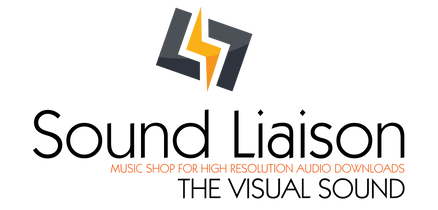Linkwitz
A New Experience in Sound Recording:
My Journey with Sound Liaison and the Pure DSD Recording Technique
At Sound Liaison, innovation and quality are at the heart of everything we do, and I’m honored to contribute as a senior engineer. Our pursuit of the perfect balance between technical precision and artistic expression has been both challenging and inspiring. For our first DSD recording, we invited Iman Spaargaren on saxophone and clarinet to collaborate with Peter Bjornild on double bass. This project not only introduced innovative techniques but also bridged the gap between tradition and modernity.
Experimentation as a Driving Force
My passion for sound has always driven me to explore and experiment, even after years in the industry. For this recording featuring Iman and Peter, I implemented an entirely new workflow. The objective was to produce pure DSD masters, a format celebrated for its unmatched clarity and natural sound. Achieving this required careful attention to detail, from microphone placement to the final mix.
The History of DSD: From Archiving to Innovation
Direct Stream Digital (DSD) has fascinated me for years. Initially developed by Sony and Philips in the 1990s, it was designed as a technology for archiving analog master tapes. Its unique single-bit, high-sampling-rate architecture enables it to capture the rich details and nuances of analog recordings with remarkable accuracy.
What captivates me most is how DSD has evolved from an archival tool into a format for contemporary productions. Its incredible clarity and precision inspired me to adopt it for our recordings, allowing me to capture music more faithfully than ever before.
Minimalist but Powerful: The Microphone Setup
For this recording, I opted for a minimalist approach, using a single stereo microphone, the Josephson C700S. Renowned for its precision and spatial accuracy, this microphone captured the performance with a purity that emphasized both the dynamics and the acoustics of the setting. This straightforward yet effective setup allowed us to achieve a natural and authentic sound.
The Synergy of Analog and Digital
In the studio, I thrive on combining analog and digital techniques. For this project, I used the Pyramix DAW as the foundation for recording and editing. Mixing was done on a vintage Studer 169 analog console, which added warmth and natural tonal richness. To enhance the ambiance and atmosphere of the performance, I utilized the TC System 6000 reverb unit. This hybrid approach enabled me to create a recording that combines the unparalleled clarity of DSD with the organic warmth of analog techniques.
The output from the Studer console was sent to two analog PowerBoxes 6pro NCore units. These cascaded 4-way analog signal processors, together with ten NCore amplifiers, powered a pair of LX521.4MG full-range dipole speakers.
The result was truly impressive! The combination of a single microphone and full-range dipoles proved to be an excellent synergy. The remarkable depth of the soundstage makes working with these speakers an incredibly inspiring experience.
https://linkwitz.store/product/lx521/
The future of Pure DSD masters
My work with Sound Liaison is all about pushing boundaries. This project represents a significant step in my quest to develop a workflow dedicated to creating pure DSD masters. It enables me to offer listeners recordings that deliver unparalleled sound quality. By blending analog and digital methods, I feel privileged to contribute to advancing this exciting field of sound recording.
Conclusion
This project is not only a technical milestone for Sound Liaison but also a personal achievement. It demonstrates the possibilities that arise when you dare to experiment and merge traditional methods with modern technology. Inspired by the history and potential of DSD, I hope this work resonates with listeners and sets a new benchmark for future recordings. For me, this recording is more than just a project, it’s a glimpse into the future of sound.
Update: a new recent pure DSD recording with the duo has now been released;


